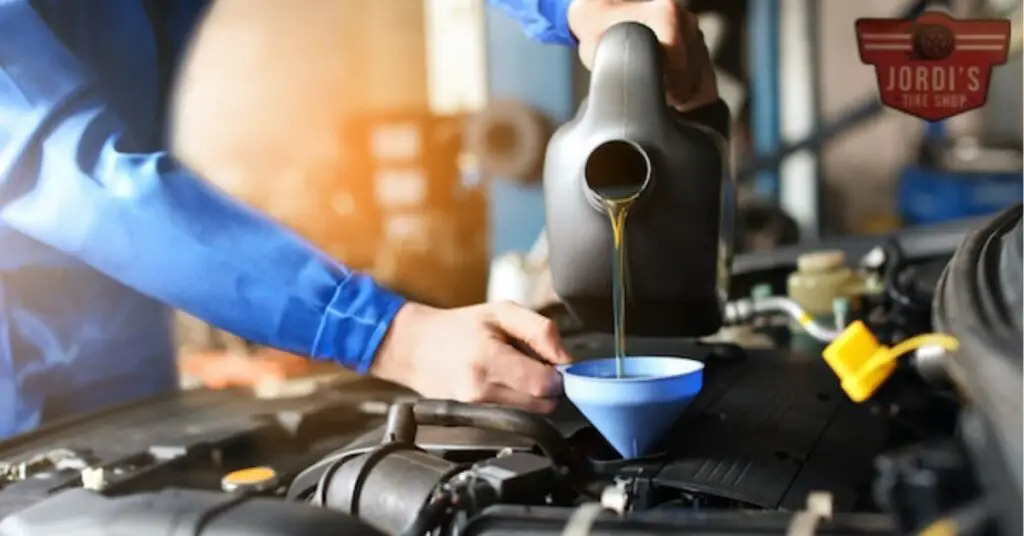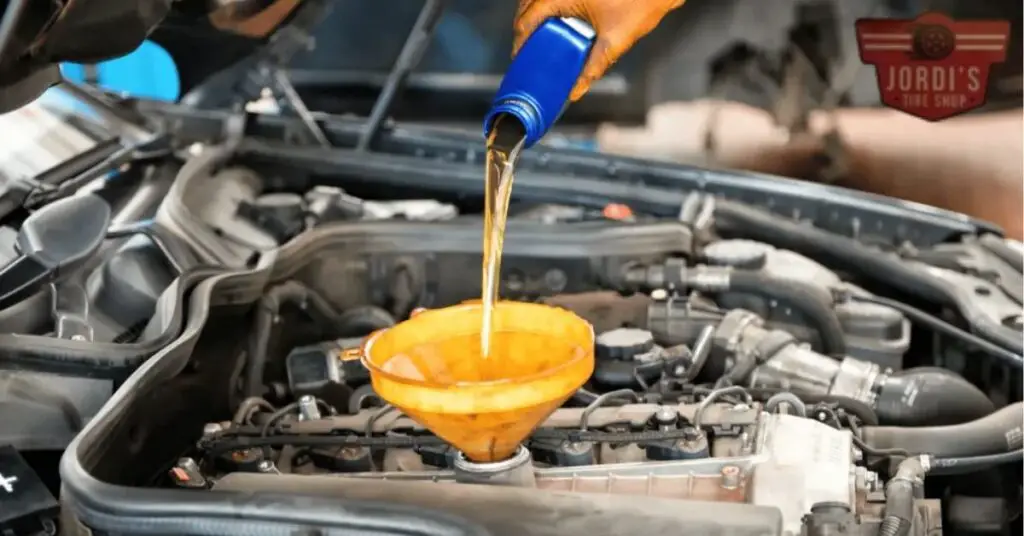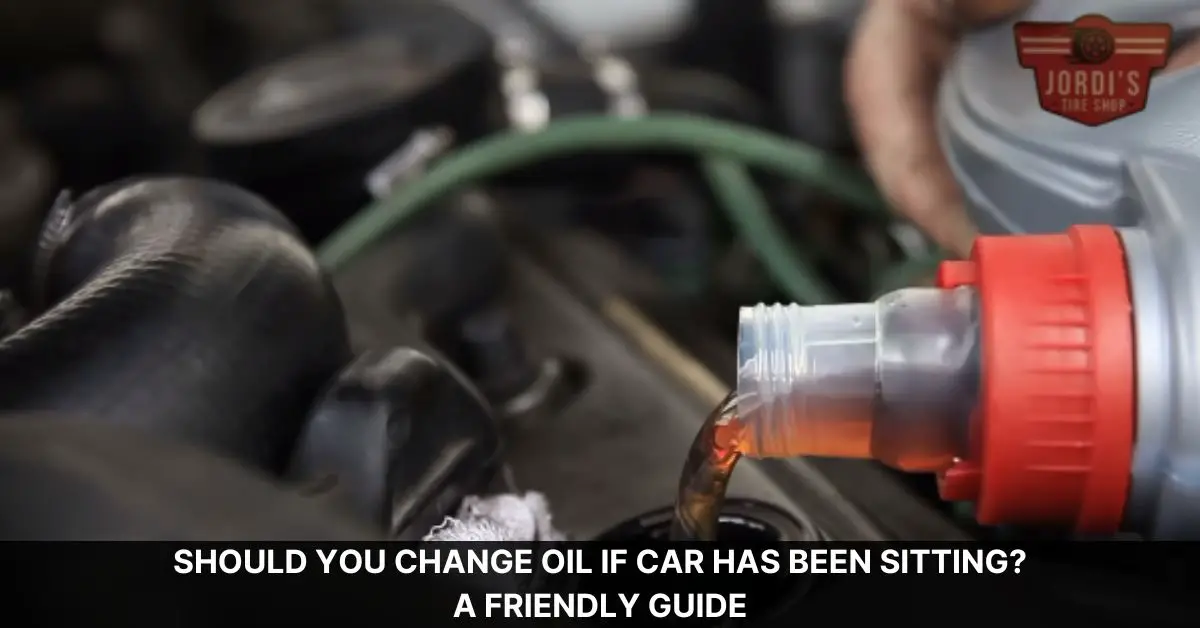Ever wondered if your car, left untouched in the garage, needs an oil change? Well, it’s a common question that plagues many vehicle owners. The simple answer is yes. But why?
Degradation and contaminants in the oil can pose a threat to your engine’s health, even when your car’s been sitting idle. Recognizing signs of oil degradation is crucial, from the oil’s cloudy appearance to its off-putting smell and gritty texture.
In this text, we’ll walk you through the process of changing the oil in a car that’s been sitting, ensuring your engine stays in peak condition. We’ll also discuss the potential risks of skipping oil changes in idle vehicles. Stay tuned to learn more.
Understanding the Importance of Regular Oil Changes
Regular oil changes factor significantly in maintaining the health and longevity of your vehicle. Regardless of the car’s usage, the quality of the oil deteriorates over time and requires regular replacement. In this section, we investigate into the role of engine oil in vehicle operation and the impact of allowing a car to sit unused without timely oil changes.
The Role of Engine Oil in Vehicle Operation
Engine oil serves multiple critical functions to keep your vehicle running smoothly. It lubricates the engine parts, preventing friction and the consequent overheating. When the oil is new, it effectively carries away debris and contaminants, thereby cleaning the engine. It’s important to consider, but, that oil gradually loses its lubricating efficacy. Over time, it’s less efficient at carrying away those contaminants which can cause damage. Hence, oil changes are not only essential for vehicles hitting the road daily but also for those spending more time parked.
What Happens to Oil in a Car That Sits Unused
An idle car presents a unique situation. When a car sits unused, the oil does not circulate as in a car driven regularly. The lack of circulation means moisture can accumulate within the engine. Over time, this moisture can cause acidity, leading to corrosion and potential engine damage. Meanwhile, contaminants that usually get carried away might settle in the oil pan—another reason for prioritizing oil changes even in unused cars. In essence, it’s not about the miles driven, but also about the time passed since the last oil change. Hence, proper maintenance necessitates oil change for idle vehicles as per their manufacturer’s time-based recommendations.
The Impact of Time on Oil Quality in Idle Cars

As idle cars sit, the quality of their engine oil can degrade. This degradation is influenced by time and environmental factors, highlighting the importance of regular oil changes, even in unused vehicles.
Shelf-Life of Engine Oil in Unused Vehicles
Unused engine oil has near-infinite shelf-life, but, what’s crucial to know is the SAE rating, the ability to maintain these standards may be affected over time. For instance, cars left idle for an extensive period, say 10-30 years, may still have oil present but it can become caked up. This makes it increasingly problematic to turn the engine over. Used oil also transforms, after undergoing several heating and cooling cycles, it can lose its properties and cake around the edges depending on the exposure to air. But, it’s important to note that it doesn’t completely lose its lubricating capabilities.
Also, age and technology have influenced oil quality. Refining technology, for instance, removes all wax-like substances from motor oil, meaning that waxy separation isn’t typically present in oil past about SC. Further, the lifespan of modern oils can extend to 5 years, and you may expect synthetics to last even longer.
Signs of Oil Degradation Over Time
Recognizing when your oil is deteriorating is fundamental to maintaining the health of your engine in an idle car. Here are what such indicators look like:
- Oil Color and Consistency: Inspect the color of your oil; fresh, good-quality oil often bears a clear amber hue. If the oil in your vehicle has turned dark, it is likely an indicator it’s time to switch it out. The appearance and texture of oil can transform due to contamination over time and affect its lubricating competence.
- Low Oil Level: An oil level check could reveal a decrease, which might occur due to minor leaks or evaporation over a prolonged period of idleness. A low level of oil stresses the need for a top-up or a complete change, particularly if the vehicle has been resting for months.
- Odor of Oil: An unusual smell originating from the oil in your vehicle is another tell-tale sign that it may be time for a change.
Taking into account these indicators can significantly contribute to ensuring your vehicle performs optimally when needed.
Risks Associated with Skipping Regular Oil Changes in Idle Vehicles

While a car sits idle, many factors can adversely affect the state of the engine oil. These include moisture accumulation, breakdown of oil additives, and formation of sludge, among others. To avoid catastrophic outcomes, you must understand the potential repercussions of skipping regular oil changes on vehicle health.
Potential Engine Damage
Engine oil plays a pivotal role in maintaining your vehicle’s health by protecting critical components. Over time, the chemical properties of this oil change, leading to acidity, which can cause corrosion within your engine. The breakdown of oil additives further compounds this issue, fostering sludge formation ─ a thick, tar-like substance. Sludge can obstruct the engine’s internal pathways, hampering the regular oil flow required for smooth operations. In extreme cases, such as neglecting oil changes for a prolonged period, your engine’s components ─ bearings, cylinders, and gears ─ could be starved of necessary lubrication. This can lead to increased friction, generation of excess heat, and eventually, important engine damage.
Impact on Overall Car Performance
Oil changes don’t only impact the engine’s condition but also significantly affect a car’s overall performance. As the engine’s efficiency is compromised due to the issues mentioned above, it has to work harder, resulting in decreased fuel economy. Also, the sludge buildup can lead to a reduction in engine power, making the car feel sluggish and less responsive. This reduction in performance isn’t just inconvenient but could also lead to an increase in repair expenses. So, when it comes to idle vehicles, a simple oil change can refresh these systems, assuring your vehicle performs optimally.
Oil Change Recommendations for Cars Not Frequently Driven

Your vehicle may not clock a lot of miles, but that doesn’t allude that you can skimp on oil changes. Exploring into the quandary of “should you change oil if car has been sitting,” you’ll uncover varied considerations impacting oil longevity, among them—your vehicle’s idle status.
Balancing Mileage and Time-Based Recommendations
Even if your car tends to sit idle, regular engine oil changes are crucial. It’s easy to assume that oil changes hinge mainly on the distance driven, but that’s just part of the story. Time plays an equally pivotal role. The truth is, engine oil can degrade over time, even without mileage accumulation. Factors like moisture absorption, contamination from debris, or even potential acidity buildup can set the stage for oil degradation. These, in turn, can wreak havoc on your engine’s overall health. So, you’d be wise to follow a blend of mileage and time-based oil change recommendations. For instance, automobile manufacturers often prescribe an oil change auditorily, for instance, every six months to a year, plus to mileage prompts.
Adjusting Regular Maintenance for Idle Vehicles
The maintenance schedule for cars not frequently driven can be a bit different. Your vehicle may be idle, but that doesn’t get it off the hook when it comes to oil changes. Engine oil, sitting unused, can absorb moisture and begin to degrade. Hence, the lack of oil cycling can lead to accumulation of substances like fuel residues, combustion byproducts, and minute particles that can potentially damage the engine. Considering these findings, changing the engine oil as per the manufacturer’s time-based recommendations becomes even more non-negotiable. This practice equips your engine to resist corrosion and prevent engine damage. So, even if your vehicle isn’t clocking miles, don’t sideline the importance of adjusting your regular maintenance schedule to keep your car’s engine in an optimal state.
Practical Guide to Changing Car Oil After Prolonged Inactivity

Changing the oil of a vehicle that’s been sitting idle isn’t a complicated task; it just takes a bit of preparation and a straightforward series of actions. Let’s get started.
Preparative Steps for the Oil Change
When preparing to change the oil, there are a couple of key steps to keep in mind. First off, inspect the oil level and quality using the dipstick. Dark, gritty oil is your cue that a change is definitely in order. Secondly, gather all the necessary resources: the manufacturer recommended type and amount of oil, a new oil filter, an oil pan to catch the old oil, and any required tools for removing the oil drain plug and filter. It’s crucial that you have everything in place before you begin.
Remember, safety should always be a priority. Equip yourself with gloves, goggles, and when hoisting the vehicle, ensure it’s properly and securely raised on jack stands. Doing the job on a flat, stable surface is also a must.
Effective Procedure for Changing Staled Oil
Onto the actual oil changing process. If the car is operational, warm up the engine for a few minutes. Warming up the oil not only makes it thinner, but also easier to drain. If for any reason the vehicle won’t start, you can skip this step and proceed to draining the old oil.
With the vehicle raised and secured, you can carefully remove the oil drain plug, allowing the old oil to flow into the prepared pan. Be sure let it drain completely! Once that’s done, replace the old oil filter with the new one you’ve selected, and gradually refill the engine with the new oil, based on your manufacturer’s exact recommendations.
Don’t forget to check for leaks after adding the new oil. A quick inspection can save you a lot of trouble down the line.
Using a high-quality oil additive designed for long periods of inactivity can also prove beneficial. It helps protect your engine, but it’s important to remember that it should complement the oil change, not replace it.
Following these steps, you’ll be well on your way to addressing oil degradation in your car that’s been sitting idle, thereby preserving your engine’s health and preventing potential future issues.
Preventive Measures to Avoid Regular Oil Changes
The chance of engine damage and premature oil changes can be significantly reduced by taking a few preventive measures. Let’s investigate into some strategies you can employ to maintain optimal engine health, even if your car isn’t frequently used.
Importance of Car Warm-Ups
Waking your car from its slumber, even if it’s not hitting the road, plays an essential role in preventing oil degradation. Routinely, that is, at least once every two weeks, run your car engine to get it warmed up. Wondering why it makes a difference? Well, by just warming up the engine, any moisture that has accumulated evaporates, so maintaining oil circulation and preserving the engine oil’s viscosity. More importantly, the lubricating properties of the oil remain intact, which significantly helps in averting costly visits to the mechanic.
Utilizing High-Quality Oil and Filters
It’s all about the quality when it comes to engine oil. Selection of the right oil type for your car can have a important effect on its longevity. Synthetic oils, known for their superior stability and resistance to breakdown, particularly offer better protection for engines that sit idle for prolonged times.
Also, the role of oil filters is equally critical in maintaining cleaner oil circulation. Premium oil filters are designed to capture more contaminants, which in turn can extend the duration between oil changes. Remember, investing in high-quality engine oil and filters isn’t an expenditure; it’s an investment into the life of your vehicle.
Emphasizing on Regular Maintenance Checks
Sitting idle does not exempt a car from requiring scheduled maintenance checks. It’s crucial to keep a routine eye on oil levels and their quality, check for any potential leaks, and ensure that the battery along with other fluids are in good health. Be mindful that the slightest negligence could lead to severe damage in the vehicle.
Also, it’s worth noting that adhering to a timely oil change schedule plays a more important role than mileage for any car’s engine health. Don’t solely rely on mileage-based recommendations. The evidence strongly advocates for considering time-based oil changes like every 6 months to a year depending on usage.
Taking these preventive measures seriously will assuredly enhance the longevity of engine oil in cars that have been taking a long rest. Let’s not forget that these small efforts go a long way in not just keeping the engine in good shape but also in reducing the environmental impact and costs associated with frequent oil changes.
Conclusion
So, you’ve seen how vital oil changes are, even for cars that sit idle. Degradation and contamination can occur over time, potentially causing important engine damage. By being mindful of oil quality signs like color changes or unusual odors, you can ensure your car’s optimal performance. Remember, neglecting oil changes can lead to increased friction, heat, and repair costs.
Even low-mileage vehicles need regular oil changes, balancing both time and mileage-based guidelines. A good rule of thumb? Aim for an oil change every six months to a year.
The article also provided a step-by-step guide to changing oil in idle cars. Following these steps can help you effectively manage oil degradation and maintain your engine’s health.
Finally, prevention is key. Regular engine warm-ups, high-quality synthetic oils, and routine checks can prolong the time between oil changes. By adopting these practices, you’re ensuring the longevity of your vehicle, even if it’s not frequently used.
Related Posts:

